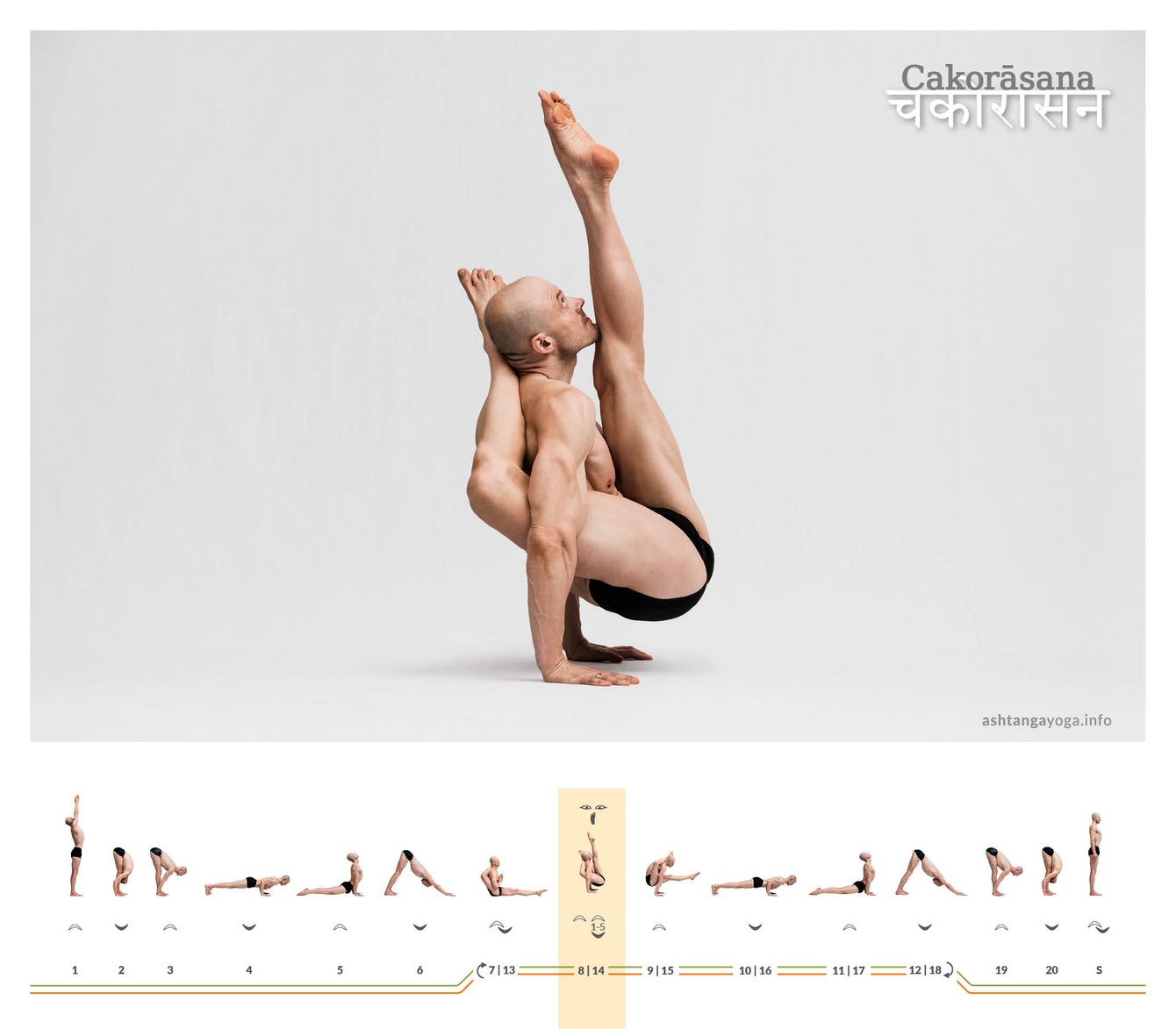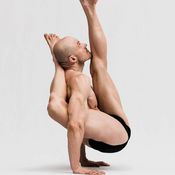

Legend: The moonbird, Cakora, is a mythical pheasant with white plumage, a long tail, larger wings and a crest on the head. Its representation is based on the Chukar bird (Alectoris chukar). The Cakora-bird drinks the rays of the moon or its nectar (Candra). If it sees poisoned food, its eyes turn red. In Indian mythology, it often appears as a symbol of love in romantic stories.
In the traditional count: Start directly from the pose of the "downward-facing dog" from the previous sequence of movements.
Vinyāsa 7 – Inhale, Exhale:
Jump inhaling from the "downward-facing dog" into a balancing position on the hands. As you slowly lower yourself exhaling, slide your left leg between your arms, and raise your right leg past the right arm. Place the foot behind the head and place your hands in front of your heart.
Vinyāsa 8 – Inhale, 5 Breaths, Exhale:
Place your hands on the ground, lift yourself with an inhalation up while raising your extended left leg. Your shin should now touch your chin. Stay for five breaths. On the fifth exhalation, take momentum over the left leg in preparation for the next Vinyāsa.
Vinyāsa 9 – Inhale:
Lift yourself up further as you inhale.
Vinyāsa 10 to 12:
Follow the familiar flow of movement to a stop in the "downward-facing dog".
Vinyāsa 13 to 18:
Now repeat the entire sequence of movements (Vinyāsa 7 to 12) on the other side.
In the traditional count: Change directly here to the flow of movement of the next posture.
Effect: Cakorāsana is the second hip opener of the third series. Therefore, a typical example of the principle of repetitive stretching, which we can observe in Aṣṭāṅga Yoga in many places. Repetitive stretching is one of the most effective methods to increase flexibility.
Fotograf: Richard Pilnick - www.richardpilnick.com


 Dr. Ronald Steiner
Dr. Ronald Steiner
Messages and ratings